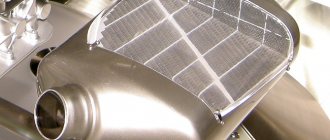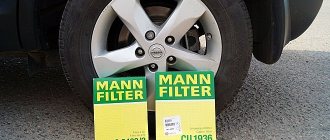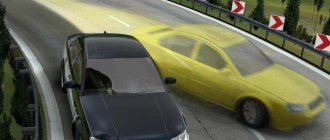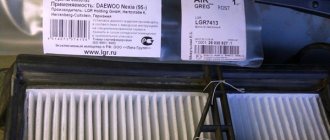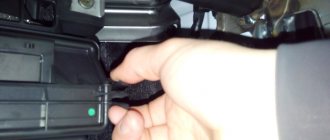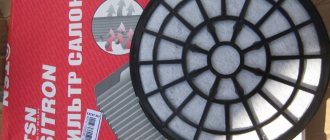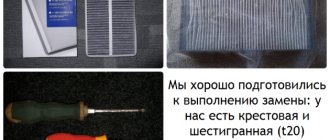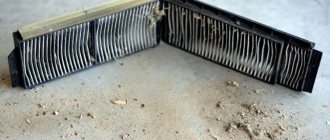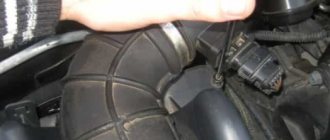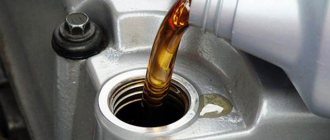Design features
The part is based on a cellular ceramic blank, enclosed in a welded metal casing. An exhaust gas purification unit is installed immediately behind the catalyst, forming a single part with it. The filter and neutralizer are located in one jar, directly after the outlet manifold. In some models, an oxidation-type auto catalyst and a filtration element are combined into one unit. Technologically, the part is called a catalytic type filter.
The original part is quite expensive due to the precious metal that is included in the structure of the filter. Iridium and platinum neutralize waste exhaust and trap soot particles.
DPF cells are either square or octagonal in shape. Closed on different sides, they create a complex passage for exhaust gas, thanks to which the new filter, according to measurements, releases almost clean air under high pressure into the atmosphere.
Markets for DPF cleaning products
Let's look at who primarily needs these technologies. If we talk specifically about a comprehensive offer, you can offer any technology: with or without removal.
Application of technology with removal, see here
The use of technology without dismantling is described in detail here.
There is no point in doing two cleanings in a row. It makes sense if you have a degree of clogged particulate filter and have certain questions, then it’s easier to do it by removing it.
Question: By the way... as far as I know, you are only promoting technology without removal, and this is where questions arise.
Application nuances. Let's just say that the technologies are very close. There are more questions about the chemicals poured into the cylinder, because certain catalysts that each company produces are know-how.
As far as I know, after communicating with our German technologists, they focused on reducing the burning temperature as much as possible without dismantling, so that there would be no risk of temperature increase, because in Germany, according to our German colleagues, their temperature control is weaker, there was a risk of the particulate filter overheating and then it had to be changed, since the matrix suffered, it’s good that the car did not suffer yet.
Overheating of the matrix can cause overheating of the bottom. Therefore, there are some nuances here. Based on certain restrictions, we see a range of applications: who can offer the technology, in what segment they operate.
Please note that if we take technology without dismantling, then these are primarily passenger service stations of any size that simply have a scanner with the ability to activate burning. This is, first of all, only passenger vehicles.
For trucks, this technology is ineffective. If we talk about the dismantling option, then there is already the opportunity to work in any segment: official dealer stations, when working on passenger cars and truck systems.
These could be special stores that offer this product to the end consumer, if he has the opportunity to remove and install the particulate filter, or negotiate with some service to help him.
It is useless to offer products for processing the particulate filter without dismantling to an ordinary client, an ordinary consumer who does not have the equipment to provide the entire technological chain; again, large fleets with any type of transport, both passenger cars and trucks, the main thing is that there is a wash where they can be washed with back pressure.
1. Rinsing the particulate filter cleaner
2. Particulate filter cleaner
3. High pressure spray gun
High pressure is not needed, normal tap pressure is sufficient. Mining organizations, mines, large fleets with large heavy equipment, including off-road ones, are very good.
If we talk about the conditions of a regular passenger car service, then offering 2 technologies at once gives him the right to choose. You can always choose the most optimal option for processing the particulate filter in a particular situation.
None of our competitors can offer such a complex, so there are nuances here. Unfortunately, I don’t have statistics on the nuances of application. But the first samples of these preparations for processing had a higher operating temperature threshold. German manufacturers began supplying these drugs to us much earlier than to their market. They also tried it out, but said that it didn’t suit them.
Particulate filter operation
During operation, the unit performs two functions:
- spent fuel filtration;
- soot regeneration.
Filtration
- This is the usual capture of small soot particles from the exhaust as spent fuel passes through the cells.
Regeneration
is the process of cleaning the surface of the particulate filter cells from accumulated carbon deposits.
Restoring the filter unit
The latest generation filter units (since 2010) have two types of soot recovery - automatic (passive) and forced (active).
Modern foreign cars often use a passive system that burns carbon deposits using the exhaust (from 500 degrees). This happens at high speeds without additional command from the ECU.
Passive regeneration method
The problem is that the manufacturer came up with the idea of adding a special additive to diesel fuel. This method is acceptable if the car is not often used for country trips. Operating mode in the city with frequent stops is most destructive for diesel versions.
Active reduction involves forcing the temperature in the unit to completely oxidize (burn) the plaque.
Depending on the engine operating parameters, there are several methods of forced regeneration:
- Late fuel supply.
- When gases are released, additional injection occurs.
- Electric heating
- Using microwaves to heat spent fuel.
When replacing a factory filter with analogues, when the original component has exhausted its service life, in 70% of cases it is not recommended to carry out forced restoration (regeneration). Non-original components often simply catch fire and the engine block goes to pieces.
Filter classification
Volkswagen engineers most often install a soot cleaner with a catalytic shell (coating) on their models. The exception is the Transporter minibus models, which are the first in line at a car service center to remove this unit. After a mileage of 30,000, no amount of unit regeneration, cleaning, washing, etc. will help these cars. Analogues fail after 5,000 km.
The soot assembly with a catalytic coating is installed immediately after the turbine compressor and forms one unit with a catalytic converter in a common housing. When replacing or changing to a flame arrester, both parts are knocked out. The unit is based on a ceramic porous jar, the cell walls of which are coated with a layer of platinum, iridium, cerium oxide and aluminum.
The filter assembly coated with catalytic material can be restored passively or actively.
Passive recovery occurs every minute while the engine is running at high speeds due to the exhaust temperature (at least 500 degrees).
Active recovery is carried out through additional heating of the soot unit, either with additional injection at different strokes, or with the connection of additional units. Active cleaning occurs within 10 minutes after the ECU processes data from the exhaust system sensors.
The following indicators are taken as a basis:
- air flow;
- gas temperature before and after the filter unit;
- parameters of the pressure drop in the catalyst.
When replacing a filter with a flame arrester, the ECU is always reflashed both for the process of filter operation in normal mode and for starting active regeneration.
The principle of operation of the soot plant is passive and active regeneration
If we talk about the principle of operation of the particulate filter, then two successive phases should be distinguished: filtration and the subsequent phase of particulate regeneration. That is, cleaning the filter from previously accumulated soot particles. Moreover, regeneration can be active and passive.
The passive regeneration process includes cleaning the particulate element from accumulated soot by heating the filter with exhaust gases having a temperature of about 600 ° C. In order for the regeneration process to be carried out at lower temperatures (up to 5000 ° C), a certain amount of specific additives is added to the fuel.
Often, due to the impossibility of starting the passive regeneration process, for example, when the engine primarily operates without significant loads, an active or forced regeneration mode is used. In this case, the increase in exhaust gas temperature is ensured, in particular, due to:
- the use of later fuel injection;
- injection of an additional portion of fuel on the exhaust stroke;
- introducing into the design an electric heater located in front of the particulate filter;
- microwave heating of exhaust gases.
In the passive regeneration mode, soot oxidation is carried out continuously and is achieved through the operation of an expensive iridium-platinum catalyst operating in the operating temperature range from 350 to 5000 C. A series of chemical transformations are observed, having the following sequence:
- Nitrogen oxide formed during fuel combustion is oxidized to nitrogen dioxide due to interaction with the catalyst;
- Nitrogen dioxide reacts with soot to form nitrogen oxide plus carbon monoxide;
- Oxidation with oxygen produces nitrogen dioxide and carbon dioxide, respectively, which escape into the atmosphere.
The engine switches to active regeneration mode (operating temperature within 600-6500 C) based on the readings of the sensors that control its operation:
- air flow meter;
- control of pressure difference at inlet-outlet;
- outlet gas temperatures.
As a result of processing the signals coming from these sensors, the control unit issues a command to reduce the air supply to the engine, stop exhaust gas recirculation, and add additional fuel injection. As a result, the temperature of the gases rises to the level required for forced regeneration.
Fuel additive
The developers of the exhaust gas purifier design are the Peugeot-Citroen concern. The engineers used a cerium additive as a basis, which ensures the combustion of soot at medium temperatures (from 450 degrees). This design is installed after the catalyst and is a separate unit.
The fuel additive with a volume of up to five liters is located in a separate container, which is either built into the fuel tank or placed in the engine compartment. A volume of 5 liters is enough for a mileage of 150,000 - 180,000 km. Measuring the additive level is similar to checking the brake fluid level, based on a float with a scale. The additive is supplied proportionally when filling the fuel tank.
A particulate filter, like a catalyst, is certainly a necessary unit in a car, but since there are enough problems with maintenance and replacing the unit, drivers prefer to remove the standard unit after its service life has expired. It is worth remembering that removing the catalyst and filter, as well as replacing it with a flame arrester, is an administratively punishable action. To take risks or not is an individual choice.
Professional DPF Remover v3.0.0 (DPF/FAP + Flap)
Professional DPF Remover v3.0.0 (DPF/FAP + Flap) from 02.2016
Name:
Professional DPF Remover
Version:
3.0.0
Language:
English, etc. (No Russian)
Size:
73 MB.
Platform:
Windows XP, Windows 7, does not work on Windows 8.1, not tested on Windows 10, most likely will not work.
Download: DPF_Remover_v3.0.0.rar
Access only to registered users.
Description:
DPF Remover v3.0.0
program is designed to programmatically disable particulate filters (DPF/FAP disabling). How it works? everything is quite simple, the software has in its memory solutions for various cars to disable DPF, FAP - particulate filters. These solutions for soot removal are an integrated approach, both one and several methods are used, when the shutdown is done through a switch - this is turning off the particulate filter through the configuration table, or displaying sensor parameters in areas unattainable when the engine is running and overwriting them in the DTC mask, or all listed methods at once.
Such an integrated approach gives a good result, reducing failures to programmatically disable the particulate filter to a minimum, i.e. If the program database contains the necessary firmware software and there is a solution for it, then the shutdown occurs without any problems in a couple of mouse clicks.
To remove DPF / FAP you need to run the program, select the car make, select the block name and load the original firmware downloaded from the car's ECU into the program, the rest is the Professional DPF Remover v3.0.0
will do it for you, wait until the program displays a message that the operation was successful. After which you can save the firmware and write it back to the car's ECU. If the program does not recalculate the checksum, then your flasher should recalculate it when writing.
The following functions are available in Professional DPF / FAP Remover v3.0.0:
—————————————————————— DPF v3.0.0 (DPF + Flap) ——————————————————— ———
Alfa: EDC16C39 Type1 and Type2 Audi: EDC16UX,EDC16CP3 / 34, EDC16U31, EDC17CP14, Siemens PPD v1.1, V1.2, V1.3, EDC17CP44,EDC17C46,EDC17CP04, EDC16C34-4 BMW: EDC16C31 - 35, EDC16 C31 (1MB ), EDC17CP02,EDC16CP35, EDC16C31New, EDC16C35,EDC17CP45, EDC17C41 Chrysler : EDC16CP31 Chevrolet : EDC16C39 Citroen : EDC15C2, EDC16C34, EDC17C10, SID807 Fiat : EDC16C39(Ducato), EDC16C3 9 JTD, MJD 6F3, 6F3 Doblo, EDC16C39 Generic, SID803A, Marelli 8F2, Marelli 8F3, Ford: EDC16C34,EDC16C34-2, EDC16C34-2.29, EDC16C34-5, SID 206, SID807, SID803MPC, SID803A, SID206(SMAX type), SID206 Kuga, EDC16C34 Picasso Type, EDC16C3-9. 18 Lancia: EDC16C39 Honda : EDC16C31, EDC17CP06, EDC16C31(Advanced) Hyundai / KIA : EDC16C39-D373, KIA EDC16C39 Type2, Hyundai EDC16C39 Caren, EDC16C39 SantaFE, EDC17C08 Iveco : EDC16C39 Isuzu : Denso, Transtron DMax Jaguar : SID204, E DC17CP11 Jeep : EDC16U1, EDC16CP31, EDC17C49 LandRover : EDC16C39-Ford, SID208 Mazda : Denso 3-8 all series, EDC16C3,Denso CX7 Type with Adblue, EDC16C34 Mercedes : EDC16C31, Delphi DCM3.4, EDC16C31 Vito and Type2, EDC16CP36, EDC16C3, EDC16C31(2011+), EDC17 CP10 ,M55 Error fixer Mini Cooper : EDC16C35 Mitsubishi : Denso (Full 2 types supported), EDC16CP39 Nissan : Denso,EDC16C36, EDC16CP33 Type1 and Type2, SID305 Opel-Vauxhall : Denso,Denso Signum,EDC16C39, EDC16C9, EDC17C18 - C19, Marelli M JET 75-90cv, Z16DT Marelli, Denso Signum, Z16DTC, Z19DT Peugeout : EDC16C34, EDC15C2, SID803 MPC,Delphi DCM3.5, SID803A, Delphi DCM3.4 Porsche : EDC17CP44 Range Rover : EDC17CP11 Renault : EDC16C3 Type1 and Type2,EDC1 6C32, SID305 ,EDC16C11 Saab : EDC16C39,EDC16C9 Skoda : EDC17CP14, PCR2.1, Octavia19 Bosch,EDC17U01,EDC17CP20,EDC16CP44,EDC17U01 Seat : Siemens PPD V1.2, PCR 2.1, EDC17U01,EDC17CP20,EDC 16CP44 Subaru: Denso Suzuki: EDC16C3 Type1 and Type2 , EDC16C39 Toyota : EDC17CP07 Volvo : EDC16C31 Type1 and Type2,SID803MPC,EDC16C34, SID803A Type1 and Type2, EDC17CP22 VW : EDC16CP34, EDC16U31, EDC17CP14, PCR2.1, EDC16CP34-4, EDC17U01,ED C17CP20,EDC16CP44, EDC17CP46,EDC17CP52,EDC17P24, EDC17CP44, EDC17CP54
All : EDC16 — EDC17 ECU's automatic DPF switch finder item
* : Some EDC16 and all EDC17 ECU's solutions are using internal switches.
————————————— Flap support list v3.0.0: —————————————
Audi a4, a6 EDC16CP34 Toureg EDC16CP34-4 Jeep EDC16CP31 Audi EDC16C34 Alternate Audi V6TDI 3.0 Vectra C EDC EDC15VM P0098 (In EGR Remover) EDC16U1 Flap Solution EDC17CP04 EDC17CP14

